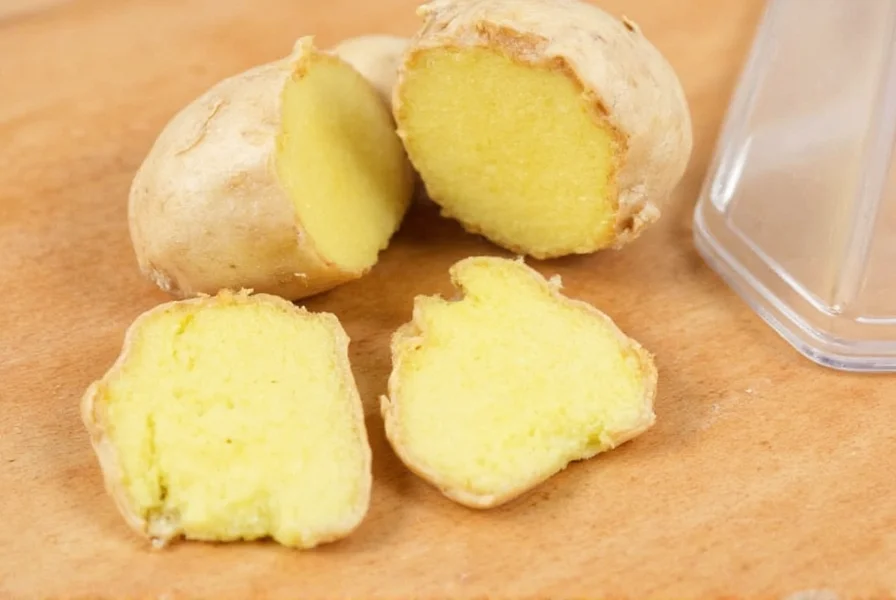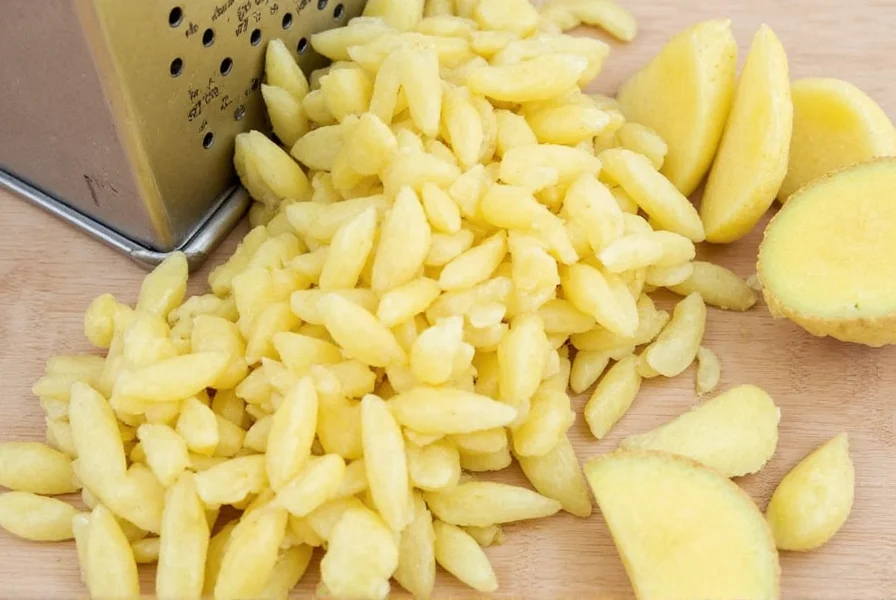Grated ginger adds vibrant flavor to countless dishes, from stir-fries to baked goods. Knowing how to properly grate this versatile root makes a significant difference in both the cooking process and final taste of your recipes. Whether you're preparing an Asian-inspired meal or adding warmth to baked treats, fresh grated ginger outperforms powdered alternatives in both flavor intensity and aromatic quality.
Essential Tools for Grating Ginger
While several kitchen tools can handle ginger grating, each produces different results. Choosing the right tool depends on your recipe requirements and available equipment.
| Tool | Best For | Texture Produced | Efficiency Rating |
|---|---|---|---|
| Microplane grater | Most recipes requiring fine ginger | Fine, fluffy, evenly distributed | ★★★★★ |
| Box grater (fine side) | General cooking applications | Moderately fine with some stringiness | ★★★★☆ |
| Chef's knife | When no grater available | Minced rather than grated | ★★★☆☆ |
| Food processor | Large quantities | Coarse, wet texture | ★★★☆☆ |
| Ginger scraper | Quick preparation with minimal waste | Fine threads | ★★★★☆ |
Step-by-Step Guide to Perfectly Grated Ginger
Preparing Your Ginger Root
Select firm, smooth ginger with tight skin and no soft spots. The best ginger for grating feels heavy for its size and has a fresh, spicy aroma. Before grating, proper preparation ensures optimal results:
- Peel the ginger: Use the edge of a spoon to gently scrape off the thin skin. This method removes minimal flesh compared to using a vegetable peeler.
- Chill the ginger: Place the peeled ginger in the freezer for 15-20 minutes. This firms up the texture, making it easier to grate without becoming stringy.
- Cut manageable pieces: Slice the ginger into 2-3 inch sections that fit comfortably in your hand for better control during grating.
Mastering the Microplane Technique
The microplane grater produces the finest, most evenly distributed ginger, ideal for recipes where you want the flavor without noticeable ginger fibers:
- Hold the microplane securely over your preparation surface or bowl.
- Grip the ginger firmly but gently between your fingers.
- Using downward strokes with moderate pressure, rub the ginger against the grater.
- Rotate the ginger as you work to expose fresh surfaces.
- Stop when you reach the fibrous core, which doesn't grate well.

Alternative Methods When You Lack Specialized Tools
If you don't have a microplane, these alternative techniques for how to grate ginger without a grater work well:
Using a Box Grater
Secure the box grater in a bowl. Hold the ginger firmly and use short downward motions on the finest side. This method works well but produces slightly stringier results than a microplane.
The Knife Method for Ginger Grating
When no grater is available, this how to grate ginger with a knife technique produces acceptable results:
- Finely mince the ginger with your chef's knife
- Sprinkle a pinch of salt over the minced ginger
- Use the side of your knife blade to scrape and smash the ginger repeatedly
- The salt helps break down fibers while the scraping action creates a paste-like consistency
Maximizing Flavor and Minimizing Waste
Professional chefs use these ginger grating tips to get the most from each root:
- Grate toward a bowl: Position your grater over a small bowl to catch all the ginger juice, which contains valuable flavor compounds
- Use the knobby parts: Save irregular pieces for making ginger tea or infusing liquids
- Don't discard the pulp: After grating, squeeze the remaining pulp through cheesecloth to extract every drop of ginger juice
- Freeze excess: Store leftover grated ginger in ice cube trays covered with neutral oil for future use
Storing Grated Ginger Properly
Proper storage maintains ginger's pungent flavor and prevents spoilage:
- Refrigerate in an airtight container for up to 1 week
- For longer storage, freeze grated ginger in oil (1 teaspoon portions in ice cube trays)
- Never store grated ginger at room temperature for more than 2 hours
- Label frozen portions with date—properly stored, it remains flavorful for 3-6 months
Common Ginger Grating Mistakes to Avoid
Even experienced cooks make these errors when learning how do you grate ginger properly:
- Using a dull grater: Dull blades crush rather than cut ginger, releasing bitter compounds
- Skipping the peeling step: Unpeeled ginger adds unpleasant texture to dishes
- Grating too aggressively: Excessive pressure creates heat that alters ginger's flavor profile
- Using old ginger: Ginger older than 3 weeks loses potency and develops off-flavors
- Improper storage: Leaving grated ginger exposed to air causes rapid flavor degradation
Recipe Applications for Freshly Grated Ginger
Different dishes benefit from specific ginger preparations:
- Asian stir-fries: Use microplane-grated ginger for even distribution through sauces
- Baking: Finely grated ginger incorporates better into batters than minced
- Marinades: Combine grated ginger with garlic and oil for maximum flavor extraction
- Teas and beverages: Use coarsely grated ginger for stronger infusion
- Dressings: Microplane-grated ginger emulsifies better in vinaigrettes

Frequently Asked Questions
How much grated ginger equals one inch of fresh ginger?
One inch of fresh ginger root (about the size of your thumb) yields approximately 1 tablespoon of grated ginger. This measurement assumes proper grating technique and fresh, firm ginger.
Can I substitute ground ginger for freshly grated ginger?
While possible, the flavor profile differs significantly. As a general rule, use 1/4 teaspoon of ground ginger for every tablespoon of fresh grated ginger. Note that ground ginger lacks the bright, spicy notes of fresh ginger and works best in baked goods rather than savory dishes.
Why does my grated ginger become stringy?
Stringy grated ginger typically results from using a dull grater, grating ginger at room temperature (rather than chilled), or applying too much pressure. Fresh ginger contains fibrous strands that become more pronounced when not grated properly. Freezing the ginger for 15-20 minutes before grating firms the fibers and produces finer results.
How can I prevent my fingers from burning when grating ginger?
Ginger contains compounds that can irritate skin. To prevent burning sensations: wear a thin food-safe glove, use a paper towel to hold the ginger while grating, or dip your fingers in cold water periodically. If irritation occurs, wash hands with vinegar or lemon juice to neutralize the compounds.
What's the best way to measure grated ginger for recipes?
For precise measurements, grate ginger directly into a measuring spoon. Gently press the grated ginger down without compacting it. Avoid packing the ginger as this increases the quantity beyond recipe specifications. For larger amounts, use a kitchen scale—1 tablespoon of grated ginger weighs approximately 6 grams.










 浙公网安备
33010002000092号
浙公网安备
33010002000092号 浙B2-20120091-4
浙B2-20120091-4